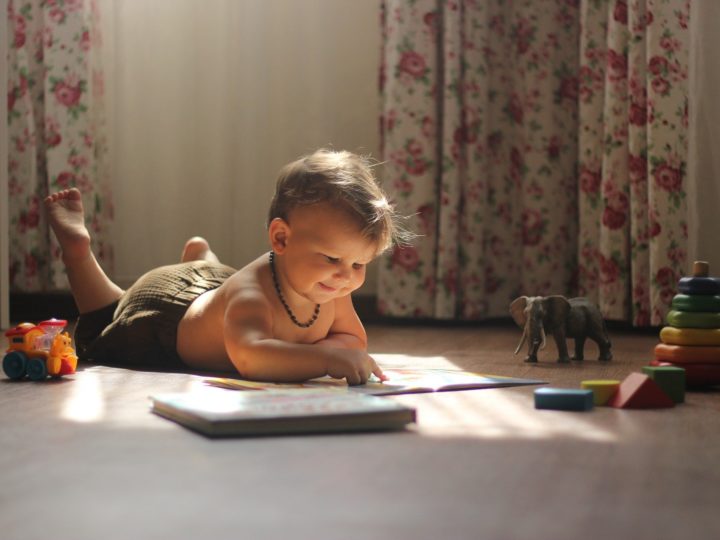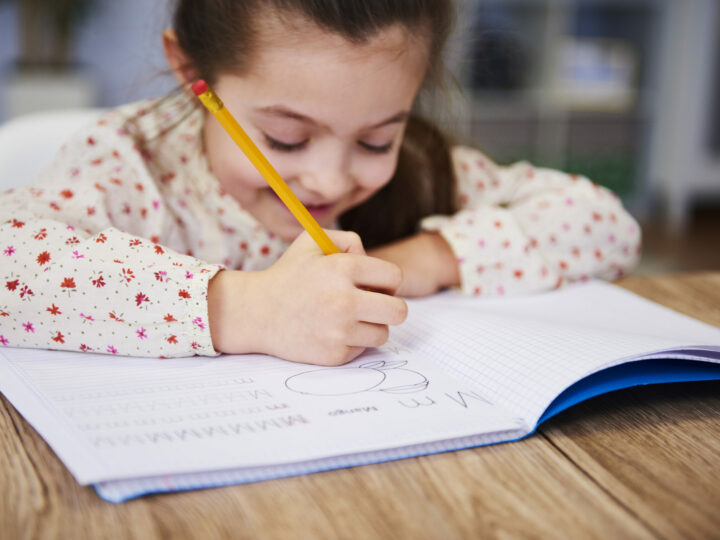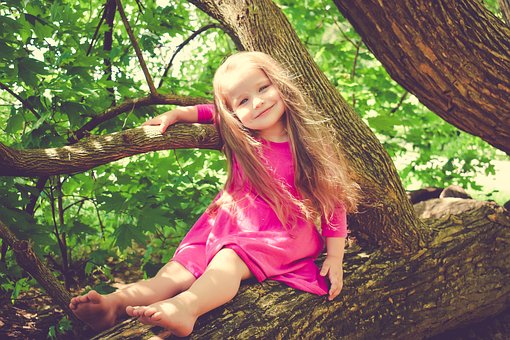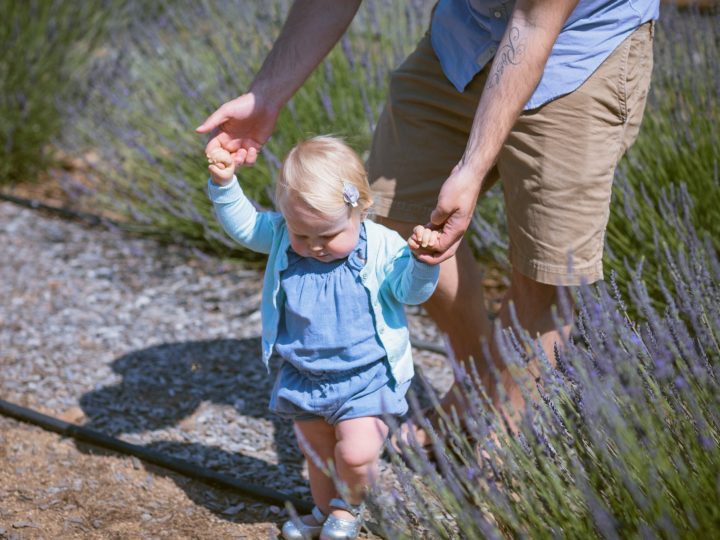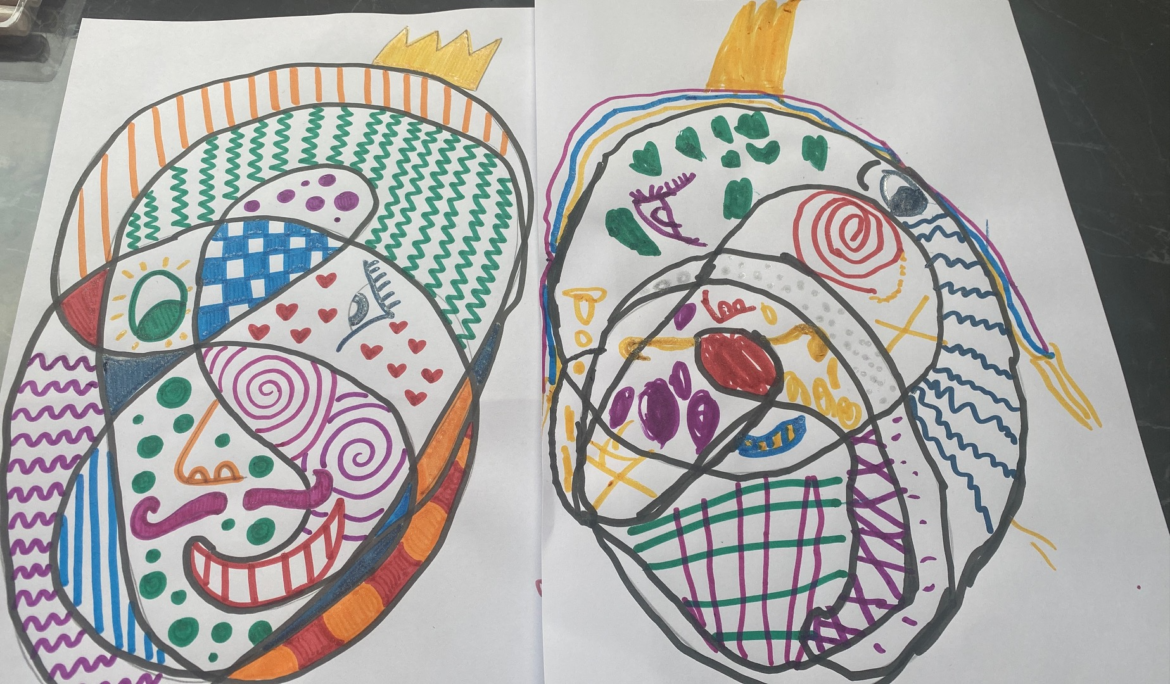
My name is Meagan and I am doing the CAP Petite Enfance with the Paris Institute of Childcare Training. In the afternoons after our courses I look after two amazing children where I try to stimulate their English through different kinds of activities. Drawing back to my degree in art history I try to incorporate all that I have learned to create activities that adapt to the age and development of the child and encourage learning through art and craft!
Introducing Art to Children
 When is the right time to introduce art to children, and how do we do this? Children experience multiple metamorphoses from the time that they are born to when they are of school age. In the CAP program we examine the development and care of children from birth to six years old. An important stage that we examine closely is when children begin to have an interest in drawing and coloring, which starts at about one year old when children have developed their fine motor skills to make some gribouillage on paper with a coloring instrument. At two to three years they are capable to make a simple bonhomme têtard, and then at four to five years they can normally figure out how to draw a schema corporel. Children are also developing and perfecting their language skills during these periods, so learning through art and crafts introduces the added opportunity to introduce them to new artistic vocabulary. This can be helpful in settings where the children are bilingual or are learning a new language. In my experience, I have seen that at about three years old is one of the best times to introduce fine arts and artists to children. Learning through art and crafts is, above all, fun, and one of the most fun and interesting artists for children, I believe, is Pablo Picasso. Picasso not only has a huge catalogue raisonné with tons of works where we can find inspiration for activities, but there is also humor which will be very entertaining for little ones. In this post I will be discussing art-centered activities that adapt to children as they grow.
When is the right time to introduce art to children, and how do we do this? Children experience multiple metamorphoses from the time that they are born to when they are of school age. In the CAP program we examine the development and care of children from birth to six years old. An important stage that we examine closely is when children begin to have an interest in drawing and coloring, which starts at about one year old when children have developed their fine motor skills to make some gribouillage on paper with a coloring instrument. At two to three years they are capable to make a simple bonhomme têtard, and then at four to five years they can normally figure out how to draw a schema corporel. Children are also developing and perfecting their language skills during these periods, so learning through art and crafts introduces the added opportunity to introduce them to new artistic vocabulary. This can be helpful in settings where the children are bilingual or are learning a new language. In my experience, I have seen that at about three years old is one of the best times to introduce fine arts and artists to children. Learning through art and crafts is, above all, fun, and one of the most fun and interesting artists for children, I believe, is Pablo Picasso. Picasso not only has a huge catalogue raisonné with tons of works where we can find inspiration for activities, but there is also humor which will be very entertaining for little ones. In this post I will be discussing art-centered activities that adapt to children as they grow.
Art Museum Visits in Paris
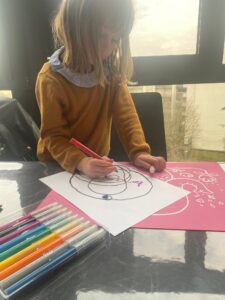 Here in the center of Paris we are lucky to have the Musée Picasso, which is smaller than the Louvre or the Musée D’Orsay, as well as less intimidating. This is an ideal place to visit for a Wednesday with the children, but it is also situated in a beautiful hôtel particulier, which makes it feel cozier than other museums. When I visited this museum with Faustine she told me that she felt that she was like a princess in a castle. Upon entering into the galleries we are met with vibrant colors, dynamic shapes and patterns, which are characteristic to Picasso’s signature style of cubism. Faustine was three years old when we visited the Picasso Museum. In the museum we wandered around the galleries and I would ask her which colors and shapes she sees to further develop her language skills and to expand her vocabulary in English. We discussed which paintings are her favorite and what feelings she gets when she observes the works. This is a way to teach children how to really look and try to understand a painting while also developing and enhancing the acquisition of language. If the questions start to be too much for the child, being in the Picasso museum, you can ask them to then try to mimic the faces by making grimaces, this shows that there can be humor and amusement in the world of fine arts; we can also ask if they see something funny with the portraits. Picasso is famous for putting facial features not in the right places or eyes that do not match, normally; this is funny for little ones to see if an ear is where a nose should be or if two eyes are not the same.
Here in the center of Paris we are lucky to have the Musée Picasso, which is smaller than the Louvre or the Musée D’Orsay, as well as less intimidating. This is an ideal place to visit for a Wednesday with the children, but it is also situated in a beautiful hôtel particulier, which makes it feel cozier than other museums. When I visited this museum with Faustine she told me that she felt that she was like a princess in a castle. Upon entering into the galleries we are met with vibrant colors, dynamic shapes and patterns, which are characteristic to Picasso’s signature style of cubism. Faustine was three years old when we visited the Picasso Museum. In the museum we wandered around the galleries and I would ask her which colors and shapes she sees to further develop her language skills and to expand her vocabulary in English. We discussed which paintings are her favorite and what feelings she gets when she observes the works. This is a way to teach children how to really look and try to understand a painting while also developing and enhancing the acquisition of language. If the questions start to be too much for the child, being in the Picasso museum, you can ask them to then try to mimic the faces by making grimaces, this shows that there can be humor and amusement in the world of fine arts; we can also ask if they see something funny with the portraits. Picasso is famous for putting facial features not in the right places or eyes that do not match, normally; this is funny for little ones to see if an ear is where a nose should be or if two eyes are not the same.
Adapting art activities for Growing Children
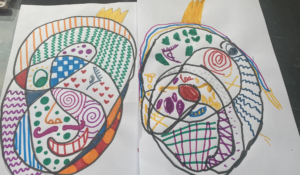 Luckily I have had the chance of working with my current family for almost three years, and have been able to watch the children grow up right before my eyes. As the children grow I find myself having to adapt my activities to their ages. Fast forward to now, where Faustine is in grande section and I wanted to revisit Picasso, but in a way that is more appropriate to her age. I start by asking her if she remembers when we went to the Picasso Museum and she does, we also look at the pictures of her making the grimaces that she mimicked from looking at the paintings. Before I plan an activity I always try to have references, so sometimes I bring a book from my collection at home or sometimes make scans or even print out images from the internet so that way the children have an idea of where to draw inspiration. My idea with an activity is never for the children to copy, but always to be inspired. Another way that I prepare is to make a modele myself, I normally do this during my own time or during the time that Faustine has jeu libre. This time the activity that I am proposing is for Faustine to create and draw her own “Picasso portrait,” where we start out by making an intersecting line drawing with amorphic shapes and then after that is completed we look for places to put the facial features. Faustine is able to decide how she would like to make her “Picasso face.” After the face is completed we set about filling in the shapes with patterns and colors, once again, she is able to draw inspiration from my example or the Picasso paintings that we have observed together. The materials we used were paper, pencils, and then markers with different sized tips to be able to make a more detailed project. Learning through art and crafts is not just amusing for children, but develops their creativity and their motor skills and at the end the children have a beautiful art project as well as having also learned about a sophisticated subject matter but in a fun and age appropriate way.
Luckily I have had the chance of working with my current family for almost three years, and have been able to watch the children grow up right before my eyes. As the children grow I find myself having to adapt my activities to their ages. Fast forward to now, where Faustine is in grande section and I wanted to revisit Picasso, but in a way that is more appropriate to her age. I start by asking her if she remembers when we went to the Picasso Museum and she does, we also look at the pictures of her making the grimaces that she mimicked from looking at the paintings. Before I plan an activity I always try to have references, so sometimes I bring a book from my collection at home or sometimes make scans or even print out images from the internet so that way the children have an idea of where to draw inspiration. My idea with an activity is never for the children to copy, but always to be inspired. Another way that I prepare is to make a modele myself, I normally do this during my own time or during the time that Faustine has jeu libre. This time the activity that I am proposing is for Faustine to create and draw her own “Picasso portrait,” where we start out by making an intersecting line drawing with amorphic shapes and then after that is completed we look for places to put the facial features. Faustine is able to decide how she would like to make her “Picasso face.” After the face is completed we set about filling in the shapes with patterns and colors, once again, she is able to draw inspiration from my example or the Picasso paintings that we have observed together. The materials we used were paper, pencils, and then markers with different sized tips to be able to make a more detailed project. Learning through art and crafts is not just amusing for children, but develops their creativity and their motor skills and at the end the children have a beautiful art project as well as having also learned about a sophisticated subject matter but in a fun and age appropriate way.
By Meagan Mitchell Cap Student 2021-2022

